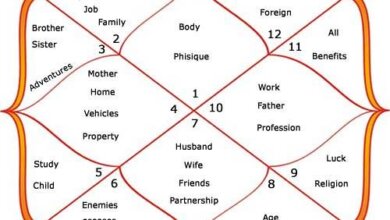
The tradition of decorative art in India goes back a very long time, long before wallpaper as we know it existed. People used frescoes and murals to decorate palace walls and temples. These artworks often showed scenes from mythology, nature, and daily life. The use of natural pigments and intricate detail was a hallmark of these early art forms. Over time, these wall-painting techniques influenced textile and print designs. Block printing, a popular method for decorating fabrics, later found its way onto paper, which became an early form of wallpaper design. This blend of new materials with old styles is what gives Indian wallpaper its unique character. It’s a continuation of a tradition that moved from walls of stone and plaster to paper rolls, all while keeping the same artistic spirit.
Mughal and Rajasthani Influences
Two of the most important influences on wallpaper with Indian themes come from the Mughal and Rajasthani periods. Mughal art is known for its detailed floral patterns, like the intricate “Jali” or lattice work, and representations of court life and gardens. These designs were symmetrical and elegant, often using a specific color palette of muted greens, blues, and golds, reflecting the refined tastes of the Mughal emperors. The patterns often feature stylized flowers such as roses, tulips, and poppies, all arranged in an orderly fashion.
Rajasthani art, on the other hand, is generally more vibrant and narrative. Pichwai paintings, for example, tell stories of Lord Krishna. These paintings are full of color and detailed figures, often set in landscapes of forests and villages. The use of bright reds, yellows, and blues makes these designs lively and full of energy. Both of these styles are widely used in modern Indian-inspired wallpapers, sometimes in their original form and other times adapted for a contemporary look.
Religious and Folk Motifs
Beyond courtly art, many Indian wallpaper designs get their inspiration from religious and folk art. Motifs from stories about gods and goddesses are common, as are symbols from nature. The lotus flower, the peacock, and elephants are frequently used. These symbols often carry deep cultural or spiritual meaning. For instance, the lotus is a symbol of purity, and the peacock represents beauty and grace. Elephants symbolize strength and good fortune. Folk art, like Madhubani from Bihar, uses bold lines and geometric shapes to depict daily life and nature. These simple, yet powerful, designs can make a space feel grounded and connected to tradition. The lines in Madhubani art are often filled with cross-hatching or other patterns, giving the designs a textured look.
Regional Variations
India is a vast country with many different regions, and each region has its own artistic traditions. This diversity is reflected in the many styles of Indian wallpapers. For example, designs from Gujarat and Rajasthan are often full of color and mirror the vibrant textiles of the region. These might include mirror work patterns or designs with bold, repetitive motifs. Designs inspired by South Indian art might feature temple architecture or motifs from traditional silk sarees, such as peacock or elephant patterns woven into the fabric. The art from the eastern part of India, like West Bengal, might have a more narrative, almost pictorial quality, reflecting the rich storytelling traditions of the area. This variety means that you can find a wallpaper style that matches a specific regional aesthetic you prefer, helping you to personalize your home even more.
Modern Interpretations of Traditional Designs
Today, many designers are taking these old patterns and giving them a modern twist. They might simplify the motifs, use a contemporary color palette, or arrange them in a new way, making them suitable for modern homes and perfect for Living Room wallpaper ideas. This is a way of keeping the art form alive while making it suitable for modern homes. A traditional paisley pattern might be used in a larger, single-color format, or a Madhubani-inspired design might be rendered in black and white. These new interpretations keep the spirit of the original art but make it feel fresh and relevant. They allow these historical designs to fit into minimalist or contemporary interiors without looking out of place. This creative re-imagining ensures that the rich history of Indian art continues to be a part of our modern lives.
When you choose a wallpaper with an Indian design, you’re not just picking a pattern. You’re choosing a piece of history and art that can make your home feel unique and full of character. These designs connect your space to a rich cultural past and serve as a beautiful reminder of the enduring nature of art.





